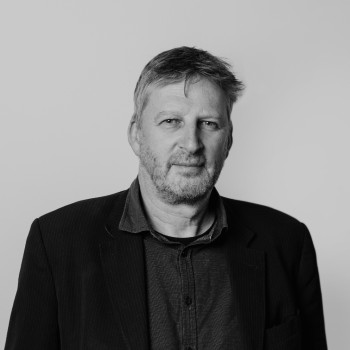
Some musings on the forthcoming: I have always enjoyed the separation between home and work; the spatial isolation of the journey facilitated the psychological and communicative dissociation, which allowed home to remain somewhat of a sanctuary. Not that I particularly disliked working from home during those first months of the pandemic and enjoyed the new-found engagement with the suburb. But now, deciding which of the lesser evils to take to get to the office in the morning – an unappetizing slow drive through densifying traffic, where at least I’m likely to be socially distanced, or an unappealing but quicker train trip, where the uneasiness around the inability to socially distance makes it difficult. As crowded as ever, and the roads and train cars are back to the pre-pandemic capacity.
So what happened? There was so much discussion about the great opportunities around a more flexible, and ultimately more inclusive workplace. After many months of low-density commutes and ease of transport, we are heading back to ‘normal’ or at least close to what it was before the pandemic arrived. Have those promises of flexible working arrangements, and working from home not materialised? Or have they just not been taken up? Or is it just my specific circumstances that skew the picture? Either way the overheard conversations still refer to a type of ‘back to normal.’ Is this a victory for the way we operate our community and our faith in Government, or have we missed an opportunity? Have employers decided the risks are too much? Perhaps people prefer – on the whole, to work at work – or work with other people, or are our homes relatively unprepared or unsuitable for this type of activity?
As architects we are asked to predict the future. Our job is to facilitate the types of relationships between people and the environment, and between people and other people; not right now, but in the immediate, mid-term or longer-term future. We plan and we make decisions based on how we think those futures might unfold. In the late 19th and early 20th Centuries architects led the way in improved buildings. Armed with emerging awareness of technologies and facing a type of pandemic in tuberculosis in particular, healthy buildings emerged; sunlight and ventilation were celebrated as positive influences on the occupation of buildings. Many of these principles have been eroded; supplanted by cheap airconditioning, and nullified by the multi-storey nature of our city centres.
So what of the future? What changes will stay? It is clear that the resonance of the pandemic will be around for a while and society will need to manage it. But how much of that management will be building and urban focused – as opposed to medical or programmatic/management? As architects we are all wondering what aspects will remain and what we can adapt in our designs to address these issues; how will we make changes in our office and residential designs? But more importantly what do we want? If nothing more, the social distancing period has caused some pause for reflection and offered up unavoidable questions. The opportunity here is to seriously embrace the concept that there are alternate ways of doing things. We can strive for a more inclusive vision.
While we all ponder that and get on with our day-to-day practice, the Institute continues to develop new programmes and respond to issues that come up. The year has started strongly with the establishment of a First Nations engagement and awareness programme through Designers for Diversity, and an energised heritage programme. The importance of this cannot be understated. While we investigate developing a Reconciliation Action Plan at a national level, in SA we are starting to talk at a more grass roots level about the opportunities for engagement with First Nations people and looking at the world from different perspectives, see more here. We anticipate and look forward to a range of conversations, project presentations, and other events over the course of the year.
Many practices are likely to be finishing off their awards submissions; contemplating the culmination of sometimes years of work. The submission process itself offers the opportunity to reflect critically on our own work, which in turn refines our self-awareness and approach to the next project – regardless of the awards judging process.
While we as a profession, are reflecting in this way and ultimately celebrating those projects, we as the Institute continue to look at the state of the profession. We are developing a position statement in collaboration with the MBA, intended as a platform for advocacy for an improved industry framework. Any advocacy position needs to be based on evidence, not anecdotes and as a membership based organisation, we rely significantly on information from our members. It is critical we establish evidence-based positions as we approach government departments and other clients and collaborators to clearly demonstrate the success or otherwise of procurement or design approaches, or general practice programs. And here is a plea for participation in that data gathering process: The Institute will from time to time put out surveys and ask for information. While this can be a small inconvenience it is a critical aspect of being able to advocate on behalf of our members. Please respond where you can.
And that brings me back to the decision about the morning or evening commute. The seemingly insatiable demand for larger and wider roads based on estimated travel times and economic volume. The issue around the Waite gatehouse demolition and/or relocation illustrates the ongoing tension around competing interests. Do we really need more roads? What’s the long term plan? Something that will remain on the agenda for a while I think.
Anthony Coupe
SA Chapter President
Cover image: Oaklands Station | COX Architecture | Photographer: Iain Bond